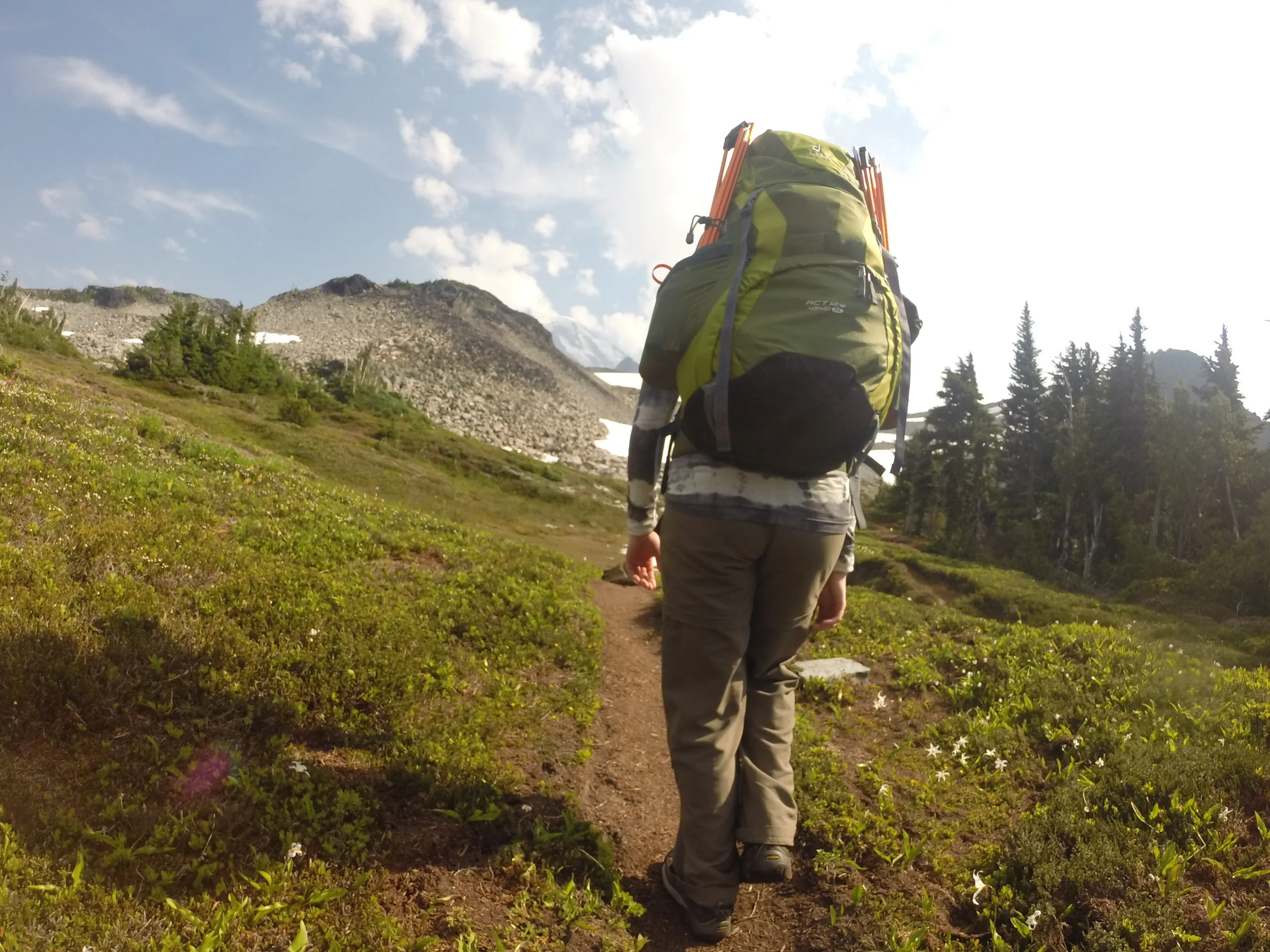Workout for Wapiti - Elk Hunting Workouts that Work
Novice’s Knowledge: There’s a chance of having to pack out hundreds of pounds of elk meat from miles out in the back country, which will take numerous back-and-forth treks from the kill spot to the vehicle. My physical strength and stamina need to be prepared for that final test of endurance.
---
Sitting here writing this post I really can’t imagine the feeling of standing over a fully butchered pile of meat, miles away from trial, road or vehicle and knowing that each and every pound will need to make the journey to cooler and car on my back. It is a thought that flat out intimidates me. However, these long arduous journeys have been completed many times before and what it will take is mental grit along with physical strength and stamina. This post will focus on how I have decided to prepare for the physical portion of that equation.
As a starting point for readers – overall throughout life I have kept myself in fairly good physical condition. I almost always belonged to some sort of gym or was involved in a physically demanding activity. That being said, I knew I was still going to be unprepared for this hunt if I did not begin the process of physical conditioning early. I put together a workup plan that began 12 weeks prior to my hunt. Know that if you’re reading this and your physical fitness level is either better or worse than mine at the start of the 12-week workup that you should adjust accordingly. Additionally, the fact that my trip is focused on doing the back country hunt with only what I can carry in/out on my back makes the physical requirements all the more demanding. My overall goal of the program was to put myself in a position that when I depart from my vehicle at the trail head that I will be at peak conditioning and energy levels. I also wanted to be conscious about adding strength without adding unnecessary mass (lucky for me, even when I work out intensely I have troubles adding weight via muscle). I don't want to carry any extra weight than is necessary, whether that weight is gear in my pack or on my own body.
I broke the workup program up into two different segments. The first would focus primarily on the addition of strength while limiting muscle mass gain, and the second portion will be focused on boosting conditioning (primarily in the legs) while maintaining strength and weight levels. Throughout all the 12 weeks I kept a continued focus on body balance and flexibility, traits that I feel are extremely important to back country adventures but are often overlooked.
The actual files of my workup programs can be downloaded here for Weeks 1-6 and here for Weeks 7-12.
Below are brief explanations of each exercise that is found in the workup plans. I also aimed to achieve this level of fitness at the lowest possible cost. I spent a total of $44 for these 12 weeks, all of which was spent to purchase a kettlebell from Craigslist. The workouts are efficient and besides the long slow bike rides and hikes, never lasted longer than a half an hour.
Weeks 1-6
Kettlebell swings may very well be the best bang for your buck exercise when it comes to strength, conditioning and time invested. Doing this exercise was my main driver for purchasing a kettlebell. See the video that is hyperlinked above for the best explanation of how to properly execute a quality KBS. I also purchased Pavel Tsatsouline's Kettlebell Simple and Sinister book (ok, so I guess I spent $56 dollars, not $44) as a great guide for programming my KBS workout. When I indicate “T” on my workup plan that means a two-handed grip on the kettlebell horn. A “L” means left-handed only and an “R” means right-handed only. All three are explained by Pavel’s book and videos. I never did more than 10 swings in a row, always focusing on achieving better form throughout the swing progression. Throughout the weeks, I looked to build up the quantity and quality of the swings.
I have the most wonderful sister in the world who is a licensed Physical Therapists who gave me grave warnings about doing this exercise. Naturally, I ignored her ultimate advice (despite how wonderful she is), but I do 100% agree with what she was saying – this is a potentially dangerous exercise. See the video above for an example of a quality TGU and you’ll understand, it’s a complicated movement. **Please note: I practiced this movement for 3 weeks every day with only a tennis shoe balanced on my clenched fist before I progressed to do anything with weight** But with this intricate movement comes challenges to balance, small muscle stability and a full body focused movement. I incorporated TGU’s into my workup because of the benefits it has for increasing shoulder stability. Last year I suffered a lot of shoulder issues because of poor shooting form and lack of strength in my back/shoulder stabilizing muscles. My bet was that TGUs would resolve those issues, and I largely believe that they did just that. A side benefit to TGUs was that my ability to hold steady on a target at full draw with my bow greatly increased. Exercise caution before proceeding with this workout but incorporating it into my workup plan has been incredibly valuable. On the linked workup sheets when I indicate "TGU x3", for example, that means I am executing three TGUs with each arm - for a total of six.
Yoga
This one needs no explanation. I wasn’t trying to do crazy poses and I didn’t go to one of those fancy hot yoga studios. Hunting, backpacking and camping put you in a surprisingly high number of uncomfortable positions for extended periods of time. Therefore, I chose to incorporate this practice in my workup. I practiced alongside the incredible number of quality, free yoga videos that exist on YouTube. I’ll give a shout out to Yoga with Adriene as she a large quantity of practices to choose from. I usually aimed for a half an hour sessions.
Hill Sprints
I looked to do sets of hill sprints at least once per week to begin building up leg and lung stamina. They are incredibly effective and it only takes a few until you’re feeling it. I chose to do hill sprints because they’re easier on the joints than flat land sprints and I think they wear me out faster. Flat land sprints or stair sprints are both great substitutes if you don’t have an adequate hill near you. I would estimate that my sprint is about 75 yards long, more than enough to get me exhausted by the end.
Weighted Walk
Including this into my weekly plan is intended to prepare myself for carrying weight on my back. Use the same backpack that you will be taking into the backcountry, as it will afford you plenty of time to make those minor adjustments to the packs fit that make a huge difference when carrying significant weight. I increased the amount of weight I carried every week. What I discovered was that once I crossed over about 60 pounds of pack weight that any small portions of the pack that weren’t properly adjusted or fit right were magnified in intensity with regards to discomfort. Know and understand how to make the small adjustments to your pack.
Weeks 7-12
This final workup will include a surprising amount of off days. With the goal being to be in top physical condition when I hit the trailhead, I am more focused on maintenance and some low impact conditioning training during the weeks leading up to the hunt. There are only a few minor additional exercises included in these weeks, outlined below.
KBS – Straight
During the first six weeks, I was focused on doing only 10 sets at a time of KBS. This workup progression, I will do higher volumes in a single straight set, still focusing on form, but wanting to get more gains in conditioning.
Biking – Long/Slow and Hills
I added a fair amount of bike rides to my plan during this time, as it’s a low impact way to build up conditioning for the legs. On days marked “Long and Slow” I looked to get 10+ miles in, but did not particularly look for challenging terrain. On days marked “Hills” I sought out difficult hills in my area and will ride up and down them a few times – akin to sprinting sessions on a bike, so the distance was greatly decreased.
These exercises came from my aforementioned sister last year when I was having issues with my shoulder. After two weeks of these exercises last year, I was back to shooting, albeit this time with better form. During this time, I am focusing on maintaining the shoulder stability gained during the first six weeks and preventing any potential issues from occurring too close to the time of the hunt. I purchases these Therabands to do the exercises with. Don't push the weight, start and stay light with it.
Pushups
Obvious enough. I also have no real reason for adding them to this list outside of I felt like I hadn’t done them in a while.
That’s it. I really have no idea if this will be too little or too much conditioning and strength training, so I'll have to circle back once the trip is done. I have a hard time believing that there is a too much, beyond pushing yourself so hard you cause injury. Being able to go on the hunt is always better than being a crazy in shape machine that gets injured a few weeks before the trip. It is my hope that when I take those first steps into the National Forest that I am ready and confident that whatever physical challenges lay ahead I will be ready for them. Only time will tell.
Kyle Zibrowski


